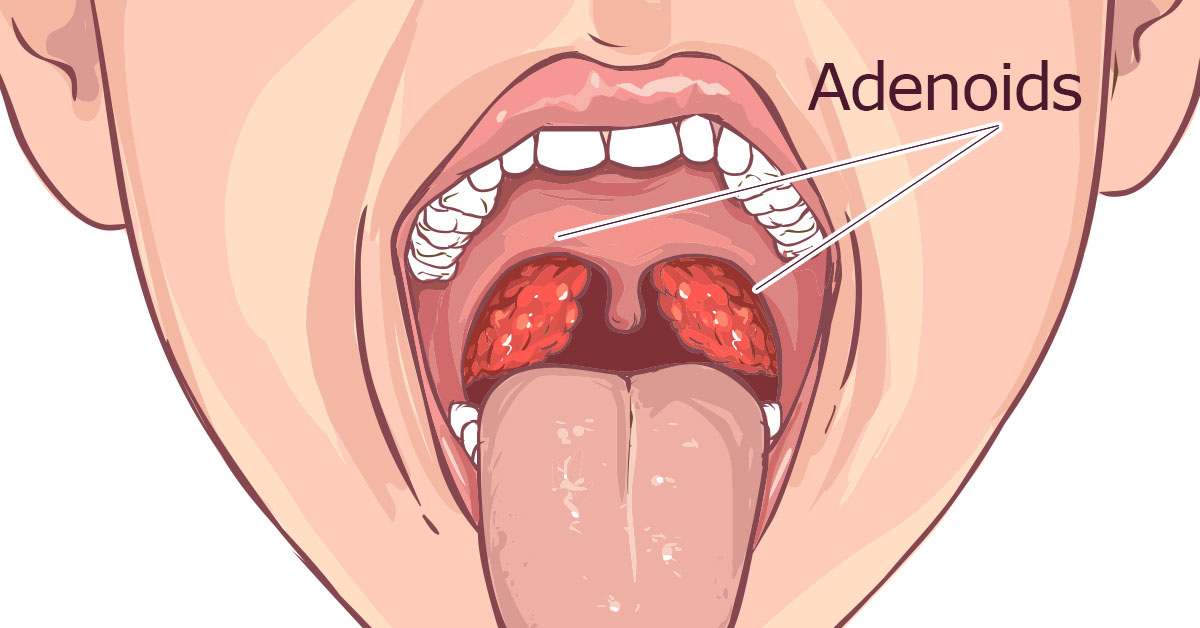
What is an Adenoidectomy?
An adenoidectomy is a surgical procedure performed to remove the adenoids. Adenoidectomies are performed for many reasons, most commonly because the adenoids become swollen or enlarged due to infection or allergies. Removing adenoids can also help curtail recurrent ear infections. Adenoid operations are a relatively quick procedure typically performed by an ENT (ear, nose, and throat) surgeon. As long as there are no complications, most patients can go home the same day.
What are Adenoids?
Adenoids are an area of lymphoid tissue located behind the nasal passages and the uvula – the soft palate that dangles at the back of the throat. Like the tonsils, adenoids are part of the immune system, helping to detect bacteria and viruses, and fighting infection. In most people, the adenoids are very small at birth. They increase in size as we grow up, until about the age of five years; after this they typically shrink, in normal cases all but disappearing by adolescence.
Chronic swelling of adenoids (the medical term is hypertrophy) can sometimes trigger nasal sinus drainage and interfere with normal breathing. Sleeping, swallowing and speaking can also be affected by chronically swollen adenoids. In typical cases, your doctor is likely to recommend a course of antibiotics to treat swollen adenoids. In cases that don’t respond to antibiotics, or if the swelling is recurrent and persistent, or if there are associated problems with the Eustachian tubes or recurrent ear infections, surgical removal of the adenoids may be the recommended approach.
How are Adenoidectomies Performed?
Although surgical removal of the tonsils is documented in history as far back as the ancient Greeks and Romans, the earliest known adenoidectomy (using a ring forceps inserted through the nose) was performed in the mid-1800s.
Today, adenoidectomies are performed several ways:
Microdebriding – employs a handheld cutting instrument with a rotating blade. Suction draws the adenoid tissue into the blade, and the surgeon uses a camera or mirror to view the site, to make sure no adjacent tissue is removed by accident.
Electrosurgery – uses electrical energy, generating high temperatures to vaporize the adenoid tissue, and cauterize blood vessels to combat post-operative bleeding. The heat can cause such damage as burning or charring of the surgical site.
Coblation – technology uses a probe which emits radiofrequency energy, and equipped to apply saline solutine, to create a plasma field. This dissolves the adenoid tissue with precision, and at relatively low temperature, minimizing damage to surrounding tissue.
All these techniques are typically performed as outpatient surgery, with the patient under general anesthesia during the procedure. Afterward, once the patient awakes and the recovery staff makes sure there are no complications, the patient is released with instructions on recovery.
Preparing for surgery
Children – Most adenoid and tonsil surgeries are performed on children, who especially need help and support to understand what’s happening, why the surgery is needed, and what things will be like afterward.
- Reassure your child that the risks are few; share and sympathize with their feelings and fears
- Remind the child that the surgery is necessary so they can feel better and be healthier
- Stay with your child as much as possible before the procedure, and after, in recovery and recuperation at home
- Tell your child what to expect when they wake up – a sore throat, most likely, but there will be medicine to help take away the soreness
- If you know someone close to your child’s age who has had a tonsillectomy or adenoidectomy, invite them to share their experience with you and your child
- Help your child understand that will look the same after the procedure, and they can leave behind the discomfort of swollen adenoids
- Ask your ear, nose and throat specialist to help with answers to your child’s questions and concerns
Adults and Children – Before any surgery, don’t take aspirin or other medications containing aspirin for two weeks.
REMINDER: Children should never have aspirin because of the risk of developing Reye’s syndrome). The surgeon might ask you to stop taking a specific medicine for a short time.
Make sure the surgeon knows if you are allergic to any medicines or anethesia, or if you have problems with blood clotting
Request and adhere to instructions on when to stop eating food and drinking liquids before surgery
Ask for and follow written instructions on how to take care of yourself after surgery, and how to spot any complications
